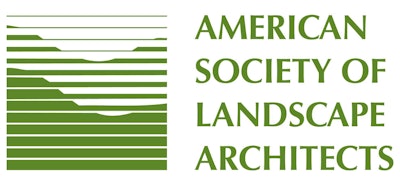The American Society of Landscape Architects (ASLA) recently launched its ASLA Diversity SuperSummit 2017 Report. This report highlights action items and strategies to help increase diversity in the profession of landscape architecture.
“Population growth of people of color in the United States has outpaced that of white Americans for the past two decades, and by 2043 the U.S. Census Bureau projects the nation to become a majority-minority nation,” ASLA states in the report. “The shifting demographics of our nation are not reflected in the field of landscape architecture. Under-representation of people of color in firms and among students of landscape architecture means we are failing to capture the potential of the future of our profession. New perspective is needed to ensure that landscape architecture reflects the communities it serves.”
In 2013, ASLA’s first Diversity Summit convened with the goal of wanting to develop a deeper understanding of why a more diverse profile is not present in the landscape architecture industry.
In summary, the report found that the shifting demographics of the nation are not reflected in the field of landscape architecture, and the group found four observations that may help rectify those numbers: using digital content and hands-on tools for exploration, rethinking how to market landscape architecture, showing diversity in context and teaching students about diversity within the profession.
When using digital content and hands-on tools, ASLA decided the best course of action was to create engaging digital content to teach children and students about landscape architecture by using existing social media platforms to extend learning beyond the classroom.
When rethinking how to better market landscape architecture, ASLA decided to introduce the industry to under-represented schools through youth employment and entrepreneurship as an economically viable career.
When exploring how to better show diversity in context, ASLA launched their Diversity Summit webpage. Through the use of this webpage, ASLA works to ensure that all content on ASLA.org reflects a diverse representation of the society. ASLA says that the website should serve as a reference about the field, and diversity should be engrained in its content.
For the final point of teaching students about diversity within the profession, ASLA strives to inspire future landscape architects by showcasing diverse paths to success while broadening the definition of design excellence.
After agreeing on these key points, those in attendance at the Diversity Summit were then asked to discuss benchmarks, initiatives and action items for the next six, nine and 12 months and their five-year goals.
After creating the five-year plan, participants then rated action items that were the most important for ASLA to accomplish in five years.
The first item was to integrate diverse imagery and recourses across ASLA.org. The second was to make all ASLA materials into a digital format to make them easily accessible. The third was to ensure that ASLA becomes a best practice model for other organizations. Aligning diversity efforts with President’s Council organizations was the fourth item, and the fifth item was seeing that STEM/STEAM education is built into an integral step of landscape architecture.
ASLA will soon launch a call for letters of interest for potential participants for the 2018 Diversity Summit in early 2018.












